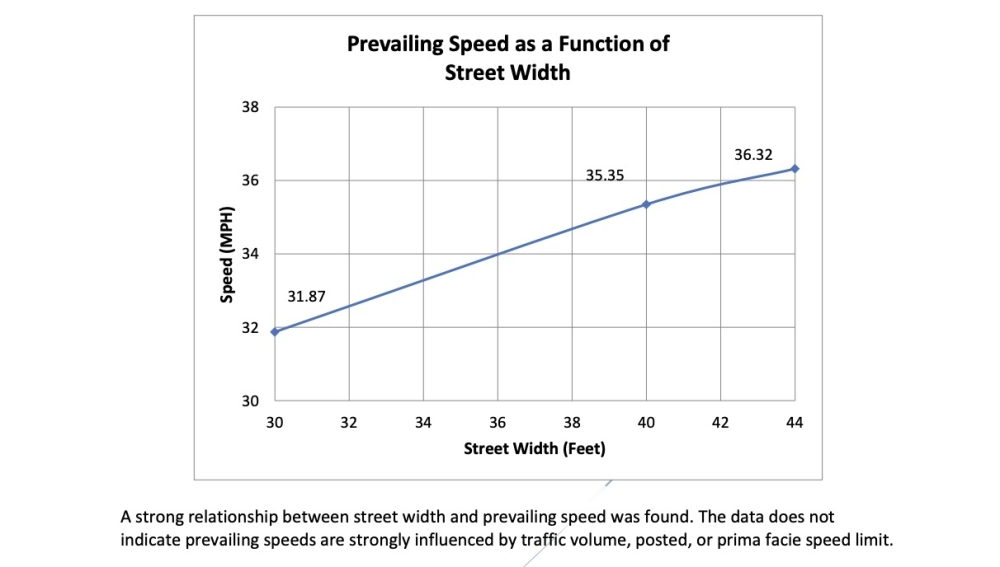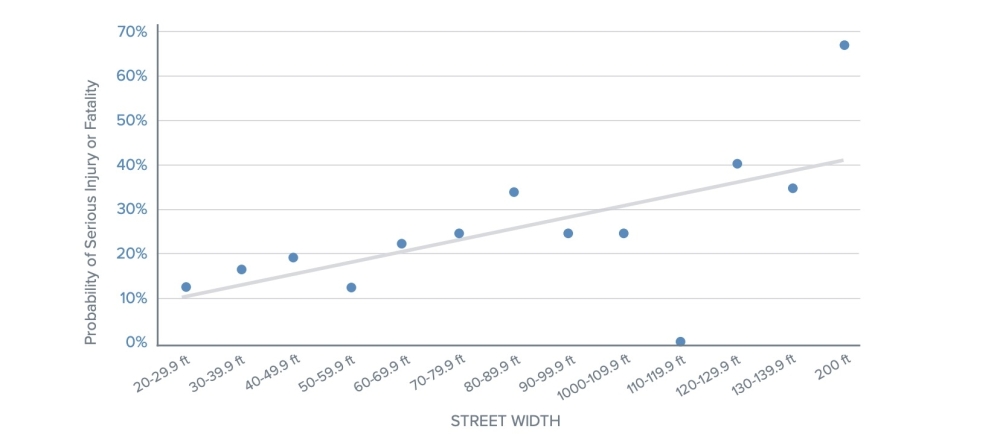The big picture
Members of the Urban Transportation Commission unanimously voted July 1 to lower Austin's recommended lane widths in the city's street design guidebook. The recommendation calls to set those standards for level 3 and 4 streets—minor and major arterials around town, just below Level 5 highways—at:
- Up to 10 feet wide, or 9 feet in constrained areas, along routes not used for trucks and transit
- Up to 11 feet wide, or 10 feet in constrained areas, on roads used for transit or freight traffic
Commission Vice Chair Spencer Schumacher said the proposal was based on findings by the National Association of City Transportation Officials and research from Johns Hopkins University pointing to the benefits of narrower roads. He also said less room for vehicle travel could also leave more room for new public amenities.
“There is good evidence to suggest that this will lead to safer and slower roadways on our arterials. But we’re also constantly fighting for space when we’re talking about redesigning our streets," Schumacher said. "There are so many places where if you had an extra foot, you could put in a street tree. If you had an extra foot, you could separate out the bike lane and the pedestrian space. So that extra foot, especially across multiple lanes, can make a really big difference in multimodal investments."
Zooming in
Schumacher referenced NACTO reporting that widths of 11 feet or wider can encourage unintended speeding than narrower lanes, and research suggesting that every few inches of lane width can be correlated with higher average vehicle speeds. The Johns Hopkins study also found a jump in crash risks on lanes 12 feet and wider.
The city already moved to a general 10-foot lane standard about a decade ago, according to Austin Transportation and Public Works. Spokesperson Brad Cesak said TPW doesn't have much data on local lane widths and speeding, as most of the department's speed data comes from residential streets that often don't have marked lanes. However, he also said narrowing roadways to encourage slower driving haven't always had that effect.
"Staff has found that some level of friction is needed for people to drive slower, which is usually found on 30’ wide streets with parking. Streets starting at 36’ wide introduce free-flow conditions, and speeds tend to increase linearly at widths of 40’, 44’, etc.," he said in an email. "Marking 'shoulders' on residential streets 36’ and wider to effectively create and narrow travel widths hasn’t resulted in consistently lower speeds."
Cesak also said the city hasn't specifically studied lane widths and safety outcomes in the past, although a "nearly linear" relationship between street sizes and traffic speeds was previously reported.


Despite the commission recommendation, lanes on city roadways likely won't be narrowing overnight. Cesak said mobility safety practices were "thoroughly reviewed" during the last update to Austin's Transportation Criteria Manual in 2022, and considerations like Capital Metro transit operations and freight movement along Austin's roads will play into any future lane size decisions.
"TPW does not intend to update the TCM as it relates to lane widths currently however, we consider each project on a case-by-case basis and our current minimum and maximum lane widths allow engineers this flexibility," he said.
TPW Deputy Director Jim Dale also noted roadway context like truck or transit travel will affect what action is taken.
"We’ve got to make sure that those trucks that are moving people into Austin can get down the roads to get to the houses where folks are moving into. ... We work with Capital Metro quite often on places where their mirrors hit more regularly to see if there’s something that we can do with lane widths," he said July 1. "Some of those roads that were mentioned are TxDOT roadways so we can’t do anything with those. But there’s a lot of roads within the city that we could look at.”
One more thing
Transportation commissioners also called for TPW to conduct a "lane width audit" of all city arterials to find roads where wider lanes could be more of a safety issue. Their recommendation requested that work as resources allow, and Cesak said the department likely won't have funding in the near future.
"Although TPW does maintain asset management resources for its infrastructure, that inventory does not include the width of each lane for all streets," he said. "Resources are not accounted for in the current [fiscal year 2024-25] or proposed FY26 budgets to perform such an inventory in-house or through a consulting contract."





